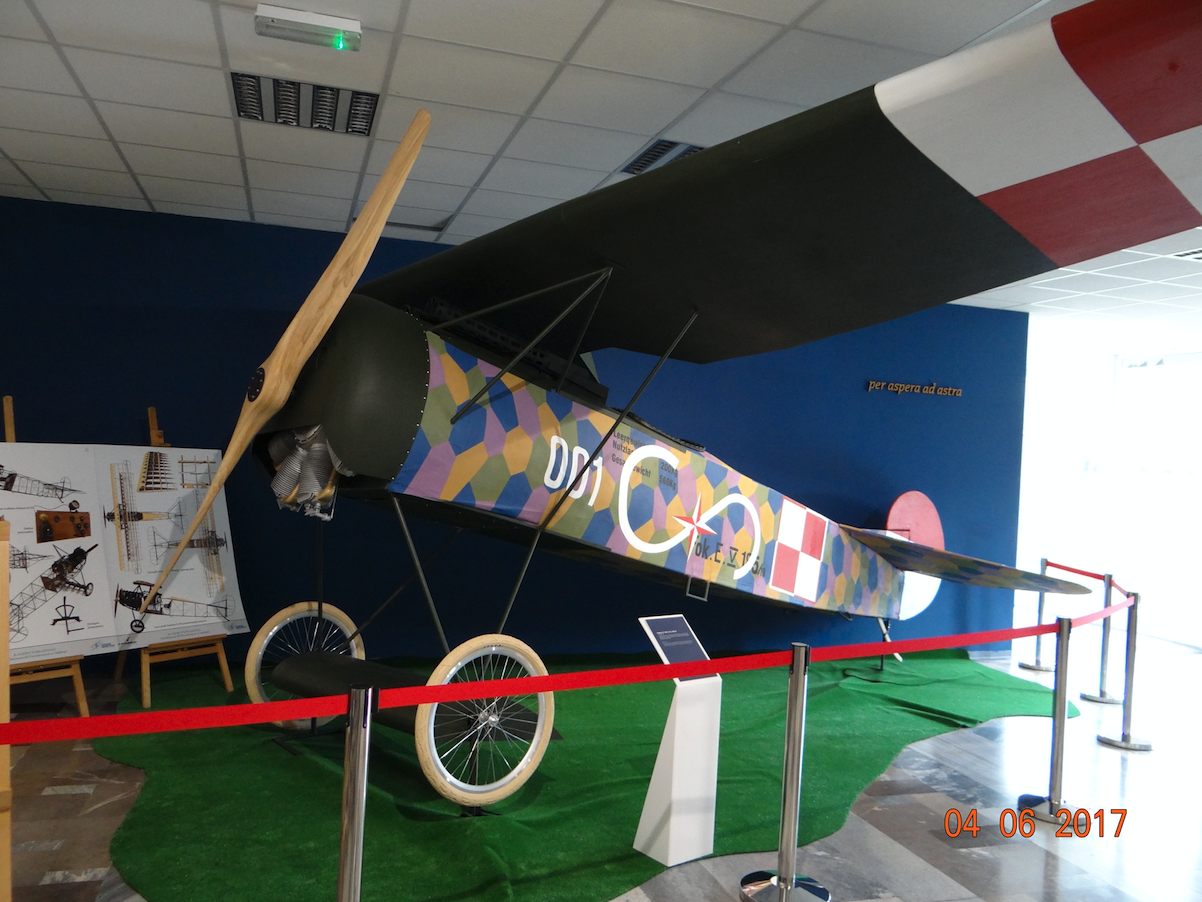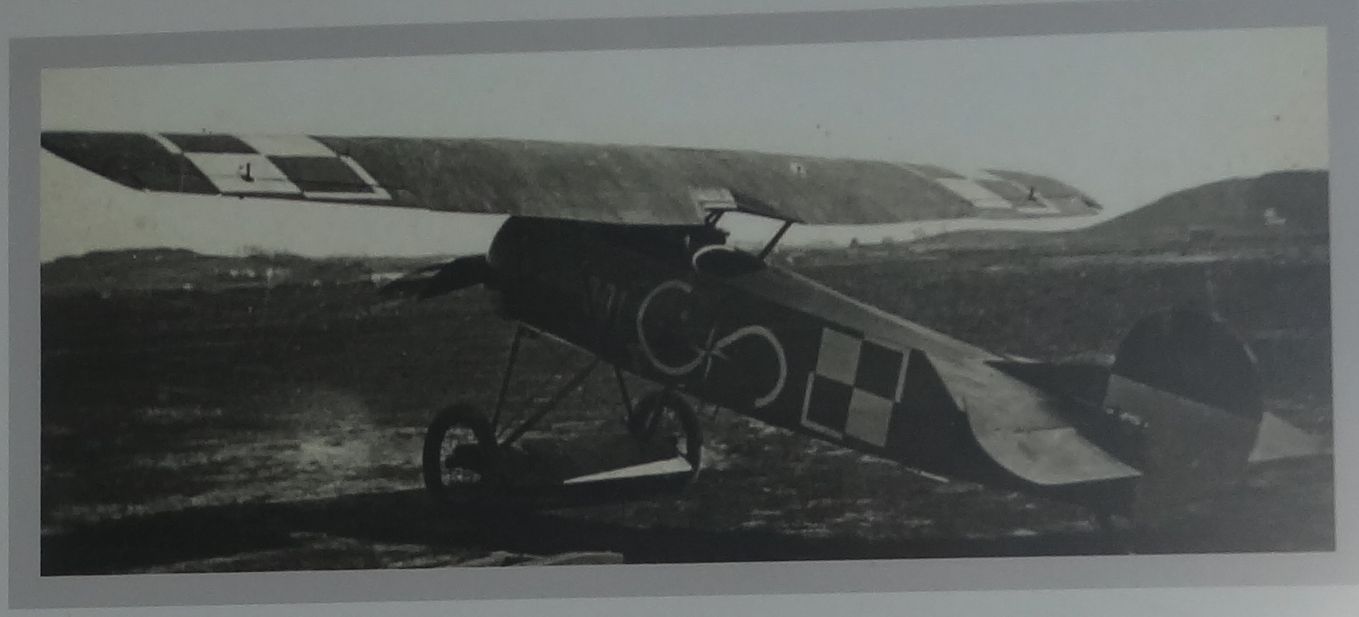Kraków 2022-11-26
Fokker E.V. (D.VIII).
Fokker E.V plane (D.VIII) is a single-seat, light fighter aircraft from the period of the Great World War. The aircraft was developed by engineer Reinhold Platz. The prototype flew in the spring of 1918. Only a small number of planes made it to the front before the armistice was announced. Initially, the aircraft was marked D.VIII, which was changed to E.V.
Fokker E.V. (D.VIII) in Poland.
There were 16 Fokker E.V and one Fokker D.VIII aircraft in Poland. All planes came from war loot in Wielkopolska. Within a few days, 7 planes were sent from Poznań to Warsaw. The planes went to military units at Okęcie. The planes were also used at the school in Ławica. The planes took part in the war for Lviv and on the southern front. Few Fokker E.V aircraft made it to December 1920.
Construction.
The Fokker D.VIII was a single-seat, single-engine high-wing fighter, the so-called "Umbrella". Truss hull made of steel pipes, covered with plywood and canvas. Trapezoidal panel, wooden, covered with plywood and canvas.
The Fokker D.VIII aircraft was powered by an 81 kW (110 hp) Oberursel Ur.II rotary engine. The engine was a 9-cylinder and air-cooled like any rotary engine.
The aircraft was armed with two synchronized 7.92 mm Spandau LMG 08/15 machine guns placed on the top of the fuselage in front of the cockpit. But other machine guns were also used. In Poland, Vickers wz. 09 7.7mm or 7.7mm Colt.
Data T-T Fokker D.VIII:
Span 8.40 m. Length 5.86 m. Height 2.82 m. Bearing area 10.70 m2. Curb weight 385 kg. Total weight 575 kg. Top speed 185 km/h. Ceiling 4,000 m. Range 250 km. Flight time 1.5 hours.
Written by Karol Placha Hetman


